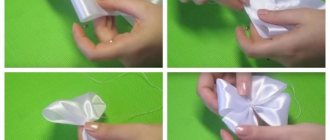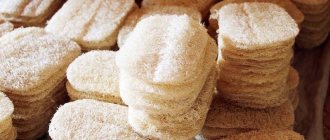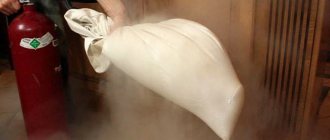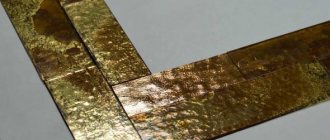Periodic cleaning of the chimney pipe is an important point in the maintenance of heating equipment. It is needed even when using high-quality, expensive firewood and modern stove installations. Small particles of combustion products gradually accumulate on the walls of the smokers and impair the operation of the system. Even a person who does not have special skills and experience in such a matter can clean the chimney.
The main tool to help will be a cleaning brush, which you can make yourself. This tool helps keep the smoke exhaust system clean, and accordingly maintain draft for quick removal of gases, and ensure efficient operation of the furnace device.
Signs, causes and consequences of a clogged pipe
The use of solid fuel for stove heating has many advantages, such as efficiency, autonomy, and heat transfer.
However, if used incorrectly, the efficiency of the heating system can significantly deteriorate. It is recommended to clean chimneys at least once every six months . But first you need to identify the main causes of clogging and try to reduce them to a minimum.
Interesting! When wood burns, gas and smoke are produced. The smoke released may be white or black. The first is a consequence of water vapor evaporating from wood or coal, and black comes from coal and soot. It is the second type of smoke that leads to the settling of the smallest soot particles and contamination of the chimney.
In addition to this natural process, the following can lead to pipe clogging:
- Burning in a firebox various waste containing a large amount of hydrocarbons (plastic, polyethylene, polystyrene foam, rigid paper, cardboard).
- Use of wet and resin-containing firewood or briquettes.
- Incorrect placement of firewood in the firebox.
- Rare cleaning of pipes from ash.
- Malfunction of the heating boiler.
The accumulation of soot and ash inside the outlet pipe leads to the following consequences:
- The passage for smoke narrows, which can cause backdraft when carbon monoxide enters the apartment.
- Large soot particles fly out of the chimney, creating a fire hazard.
We recommend that you read: How to independently build a columnar foundation from PVC pipes - step-by-step instructions
Using the heating device is strictly prohibited if the exhaust pipe is clogged. Ignoring this advice can lead to dire consequences and pose a threat to life.
You can determine that a chimney requires immediate cleaning by the following signs:
- When preparing the firebox, the wood burns poorly or goes out completely.
- The room fills with smoke.
- There is a noticeable decrease in the thermal effect of the boiler.
- Reduced cravings.
Metal brush BHM110-200BK
Payment
cashless payments; bank receipt; cash upon receipt.
Delivery
to any region of Russia; in Moscow (up to the Moscow Ring Road) - free for orders over 7,000 rubles; Moscow region — 40 rubles/km from the Moscow Ring Road.
Assembly and lifting
assembly on the day of delivery; quickly and professionally; free lift ride.
- Description
- Characteristics
- Video
Detailed description
- Diameter, mm: 110, 120, 150, 200
- Black color
- Material: Metal
- Manufacturer: Russia
The metal brush BHM110-200BK is excellent for cleaning brick chimneys; it is used together with an extension stick, which is sold separately; its price is indicated below in the section “We recommend with this product.” Flexible extensions are screwed into each other using threads. All you have to do is buy as many extension cords as you need for your chimney. The use of flexible extensions allows for excellent cleaning of indirect chimneys.
Sizes and prices of metal brushes:
- 110 mm = 840 rub.
- 120 mm = 900 rub.
- 150 mm = 1040 rub.
- 200 mm = 1120 rub.
Metal brush for cleaning chimneys
Keeping the chimney clean and free from soot and dirt is the key to proper operation of the stove or fireplace. Metal brush BHM 110-200BK is intended for mechanical cleaning of pipes. A brush made of elastic metal bristles effectively cleans even old deposits and allows you to free the chimney not only from fuel combustion products, but also from foreign objects. For use, the brush is screwed to a special rod. Depending on the length of the chimney, the required number of rods can be connected to each other. They have a flexible structure, so they are able to penetrate even a non-standard shaped chimney.
The metal brush is optimal for cleaning brick pipes; brushes are available in four different diameters (110/120/150/200 mm).
Devices for mechanical chimney cleaning
Contaminants can be removed from the chimney using chemical and mechanical methods.
- The first involves placing chemicals in the firebox and then burning them, which soften the plaque, as a result of which it dissolves and is removed naturally through the pipeline.
- The second, mechanical method, is carried out using scrapers or special brushes.
Practice has shown that the most effective cleaning is with a metal brush, which in appearance resembles a dishwashing tool with a narrow neck.
How to make a chimney brush with your own hands
Cleaning brushes made at home are in no way inferior in functionality and quality to store-bought counterparts. Using the instructions and advice of experienced stove makers, you can create a high-quality cleaning tool with your own hands that will last for more than one season.
The choice of material for the production of the brush depends on the amount and persistence of deposits in the pipe, and on the design of the outlet itself.
For regularly maintained asbestos-cement chimneys, a soft brush is suitable, and for old brick chimneys, where plaque has accumulated over the years, you cannot do without a hard metal wire.
It is better to have as many materials as possible on hand and make several brushes of different hardness or one combined option for all cases of blockage. The main materials for manufacturing are:
- steel rope;
- plastic containers;
- springs;
- thick fishing line or scraps of metal wire;
- metal chain or strong rope;
- various loads.
Before starting to manufacture a brush, it is necessary, based on the length of the chimney, its diameter and the degree of contamination, to consider the material and design of the future tool.
We recommend that you read: Advantages of corrugated stainless steel pipes
Determine the required mass and size of the load, the rigidity of the brush and the length of the cable. To choose the optimal length of rope, you need to add 2-2.5 meters of reserve to the measured depth of the chimney. This will allow you to wrap the cable around your hand or secure it to the pipe for easy cleaning.
As a load, you can use a specially cast product or a heavy car part, heavy nuts, or metal devices.
Making a plastic brush
To make a plastic brush from improvised materials at home, you will need: a cable or rope, several 1.5-2 liter plastic bottles, metal wire with a diameter of 2 mm.
Sequence of work:
- The bottom of the bottles needs to be cut off and cut into strips measuring 4-5 mm vertically to the neck. In this case, you need to cut off the top of one bottle - it will serve as the base of the structure.
- It is necessary to insert all the prepared parts into the base, one into the other, carefully protruding the cut strips to the side.
- You need to secure the strips in several bundles with wire so that the product does not fall apart, and also attach the base to the cable.
- If you have a handle of the appropriate size, you can insert it into the neck of the cut-off bottle that serves as the base. Then the product will resemble a broom.
Making a metal brush
To quickly make a metal brush you will need: a large bolt for the base and a washer for fixing, a roll of metal wire and pliers.
Sequence of work:
- Threads of the same size are cut from a coil of wire, so that the future brush fits into the chimney. For high-quality cleaning, the diameter of the tool must occupy at least 80% of the pipe being cleaned.
- The wire is wound onto the bolt up to half its length and secured with a washer. Pieces of wire can be welded to a bolt if you have the proper skills and equipment. Then the product will be stronger and more durable.
- A cable is attached to the remaining, unused part of the bolt and the brush is ready.
Materials for the brush
Cleaning brushes can be made of steel or plastic, and you can make both with your own hands.
Table: advantages and disadvantages of metal and plastic brushes
| Material | pros | Minuses |
| Steel/metal | Strength, durability, reliability | The creation process is labor-intensive, the material cost is higher compared to plastic ones, and there are some inconveniences when cleaning |
| Plastic | Ease of manufacture and operation, availability of material | The fragility of the tool, the need for frequent changes of cleaning elements; unreliable operation - plastic brushes wear out and break faster |
None of the materials can be used simultaneously for vertical and horizontal methods of cleaning deposits. Therefore, experts recommend using both metal and plastic brushes for both methods, respectively.
Features of chimney cleaning
When the tool is ready, you need to close all the bolts and vents of the fireplace or stove. Cleaning must be done from the roof side.
Important! To ensure safe work, it is necessary to securely secure yourself on the roof or use a safety net with limiters.
Next, you need to lower the brush into the pipe and clean the clogged areas. After cleaning is completed, you need to remove any fallen debris from the fireplace or stove.
We recommend that you read: Rules for clearing blockages using a plumbing cable
If a load attached to a cable is used during cleaning, first lower the cable into the pipe, and then sharply throw the brush.
Thanks to the force of attraction, the impact on blockages becomes more intense, which contributes to the destruction and shedding of soot and soot from the pipe walls. The procedure is repeated until the desired result is achieved.
Frequent mistakes and problems when making brushes
The main difficulty in making a brush is finding a suitable material. The most difficult thing to make is the head of the device. At this stage, precision and considerable effort are required.
Most masters make the following mistakes:
- Short cable length. As a result, the brush does not reach the end of the pipe. As a result, the most inaccessible area near the firebox remains clogged.
- Poor tightening of the wire between the washers. This leads to the destruction of the homemade brush during the process of cleaning the chimney.
- The pole or plugs are not strong enough. When loaded, these parts bend, preventing the brush from advancing. In the worst case, the handle breaks and its fragments get stuck in the pipe.
- Selecting a cleaning material that does not match the internal surface of the chimney. Thus, a metal brush can hopelessly ruin ceramics.
- The head width does not match the channel parameters. The head either does not fit into it or does not reach the walls.
Tips and tricks for chimney cleaning
Regular, timely removal of plaque and ash is the main factor for easy cleaning and high-quality operation of the heating system. Centuries of experience in operating fireplaces and stoves has led to the development of various methods for removing soot from smoke exhaust pipes. Here are a few of them:
- Potato peel. Half a bucket of potato peelings is poured into the pipe, which, when the boiler is turned on, heats up and releases starch. The properties of this substance help dissolve plaque.
- Aluminum containers. If you add aluminum cans to the firebox, soot will not settle on the walls. This is due to the fact that aluminum atoms have the same charge as soot particles.
- Firewood from aspen. An easy but dangerous way to remove contaminants from a pipe. A log of this tree must be placed in the firebox and the stove should be lit. After a few minutes, a hum will be heard, which means that the settled soot has caught fire and is flying out. The danger of this method is due to the uncontrolled release of hot particles, which, if they fall on the roof or neighboring buildings, can lead to a fire.
- The chemical cleaning method is accompanied by an unpleasant odor, soot and the settling of dust and dirt on all interior items close to the stove. The plaque peels off partially from the chimney, so such cleaning cannot be called completely effective.
Note! The odor emitted during chemical cleaning is harmful to human health, therefore, while using cleaning products, it is better to leave the room where the chimney is located.
Types of ruffs
The selection of these devices is made according to the following criteria:
- Diameter. It can be small (up to 100 mm), medium (100 -250 mm) and large (more than 250 mm).
- Material of manufacture. Heads are made of copper, iron and polymer plastic.
- Form. Round, polygonal, oval, square.
- Type of cable. The working part is attached to a rope, plug tubes or cable located inside the tubes.
You should also pay attention to the weight of the sinker. It varies between 5-20 kg.











